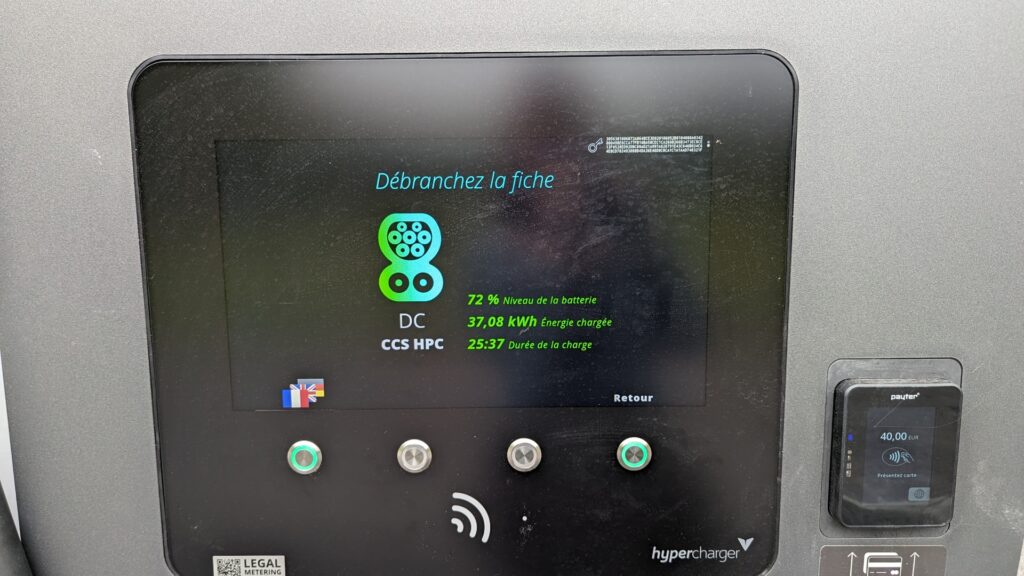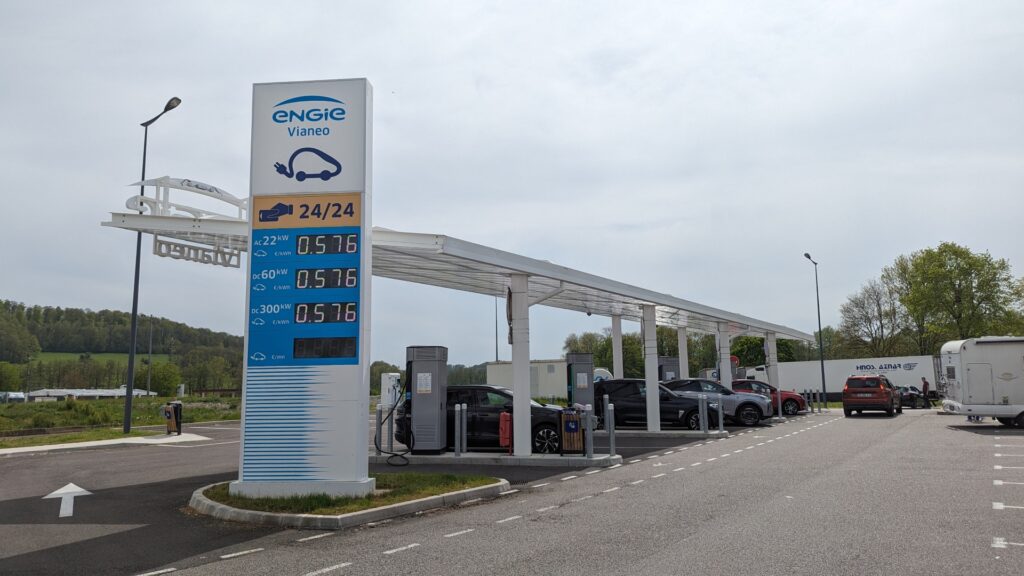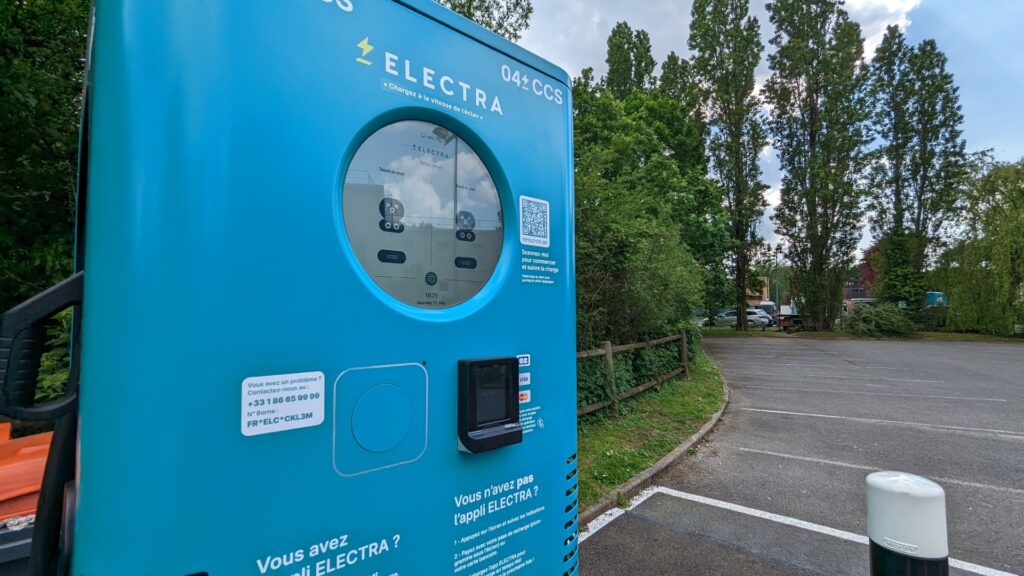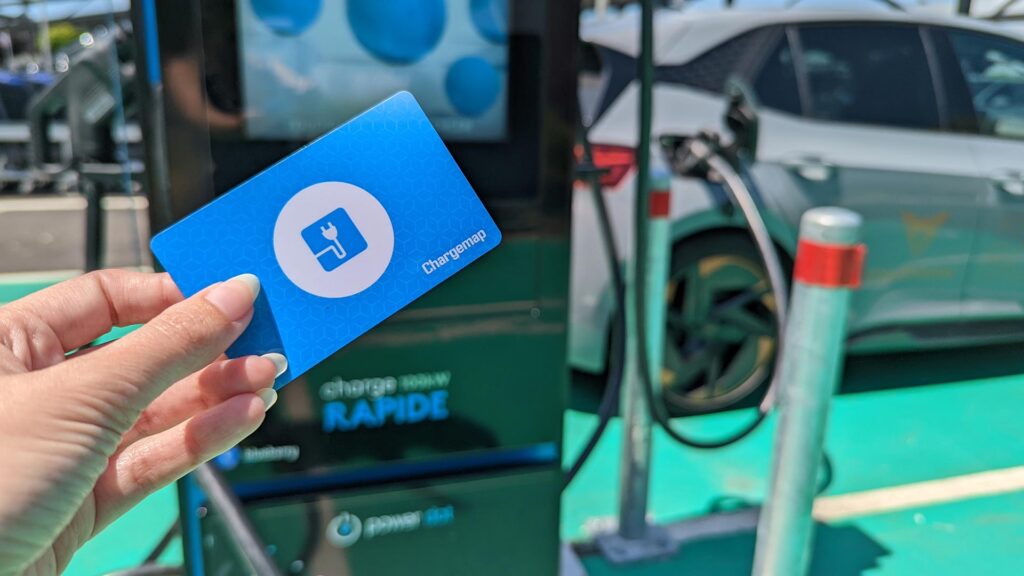Charging cards have long been an almost obligatory accessory for all electric vehicle drivers. Things are changing, it is possible to do without it on long journeys without too much worry.
The recharge card is not yet obsolete, but it is becoming easier and easier to do without it. This payment solution, compatible with almost all networks, has greatly simplified the problem of charging electric cars while roaming. Only Tesla drivers can travel without worrying too much about having a charging card thanks to the brand’s superchargers. For others, the charging card is the item that any cautious electric motorist carries before setting off on a trip.
The bank card could quickly regain its rights. A new European regulation was published on April 13, 2024, requiring terminal operators to have a CB payment terminal (TPE) on terminals over 50 kW. This obligation gives networks until January 1, 2027 to comply. In the meantime, how is it going on the highway today?
Contactless TPEs at certain operators
Fastned was probably one of the first charging operators to provide its French charging stations with an awning to protect motorists, as well as TPE to be able to pay by contactless bank card, from November 2021. If Fastned has developed in the eastern half of France, it is not very widespread in the west of the country.

Since then, other networks have adopted the contactless payment solution. This is particularly the case for the Engie Vianeo stations which have appeared on the motorway. As a bonus, a totem with the charging price is displayed just before the terminals. All this is progressing gradually.
Contactless payment still has several limitations:
- You must have activated this option on your card (there are some refractory people),
- This necessarily limits the amount to a maximum of €50. But, unless you have a Hummer EV to charge or prices double, that’s usually enough to make the next leap,
- The CB is also used to unlock the terminal to consult detailed charging information or stop charging. However, handling your card several times by passing it in front of the reader to unlock the screen is unsafe, even giving the false impression of paying several times.


During one of our recent trips, we were able to see that Total stations were installing specific equipment dedicated to paying for charging stations. Everything was still well packaged, but a TPE with credit card slot seemed to stand out. This device would make it possible to pay for all charging points, since the system is remote from the terminal itself.
QR Codes or applications to pay by bank card
For several years now, it has been possible to pay by bank card using QR codes or charging network applications. The downside: you end up having accounts scattered across different platforms, with your credit card number associated with many (too many) different sites.
You must also be careful not to scan any QR code on the charging stations, false QR codes can be stuck on the terminal by malicious people. If the code is not on the terminal screen, be careful not to send your data to a fraudulent site. For this, the network’s mobile application is certainly more secure.


Drivers accustomed to long journeys will quickly install the applications of their favorite networks: Ionity (possibly with reduced prices thanks to subscriptions), Fastned, Tesla (including for non-Tesla), etc.
Why prefer CB payment to recharge card?
If you want to save on the price of your recharges on long journeys, the question does not arise. Top-up cards operate as intermediaries, who often take a commission on top-up prices. It’s usually a few cents more per kilowatt hour (around 10% commission, on average). However, put together, this can quickly start to add up to tens of euros, if you use a lot of recharges at public terminals.
Each recharge card will also have very different prices. One of the most common and practical in France is certainly Chargemap. Here are some price differences observed during recent trips:
| Operator tariff | Chargemap price | |
|---|---|---|
| Fastned | €0.59/kWh | 0.65 €/kWh |
| Engie Vianeo | 0.576 €/kWh | 0.634 €/kWh |
| Total (50 kW terminal) | 0.52 €/kWh | 0.539 €/kWh |
| Ionity | €0.59/kWh | 0.621 €/kWh |
| Electra (excluding highway) | 0.49 or 0.59 €/kWh | 0.65 €/kWh |
Concrete example: on a recharge of the Peugeot e-3008 of 37.08 kWh at Fastned, the price is €24.66 via the recharge card, while directly the price is €21.88. Let’s multiply this by two or three breaks per 500 km, and that’s how we reduce the efforts associated with eco-driving to save range.


Is the recharge card already obsolete?
The recharge card remains practical in many circumstances:
- When the CB network breaks down. This is rare, but it is not impossible, especially on isolated terminals in the countryside.
- For operators used exceptionally on a single journey.
- For those whose system is often capricious (like Total, in our experience).
- For “regional” terminals where payment is frequently complicated.
- To centralize all expenses on a single invoice


The recharge card has the advantage of avoiding battling with the bugs of a third-party application, or even with areas in which the mobile network is fluctuating. It’s fast and all expenses are centralized in a single application. For professionals, it is therefore very practical.
On the other hand, for individuals who want to save money, the recharge badge is a security to buy (between €15 and €20), but not necessarily to use on each recharge.
Charging stations are multiplying, but everything is not yet rosy in this environment. A topic to follow in our free and straightforward newsletter, Watt Else.
Subscribe to Numerama on Google News so you don’t miss any news!
